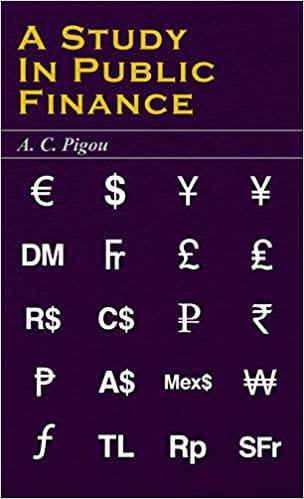Question
WALTON MEDICAL LABORATORY Margaret Walton spent 10 years working in the laboratory at City Hospital. During that time she advanced to the position of director
WALTON MEDICAL LABORATORY
Margaret Walton spent 10 years working in the laboratory at City Hospital. During that time she advanced to the position of director of the laboratory. Because she felt that opportunities for further advancement at the hospital were limited, she decided that she would open an independent laboratory to provide medical tests for private medical practices. She believed that she could help physicians reduce both their capital requirements and their administrative chores.
Walton began assembling information. She discovered a piece of land available near a number of private medical practices. The land could be purchased for $100,000, and a suitable building would cost approximately $400,000. The building would have a useful life of approximately 40 years and have 31 years for tax purposes. Laboratory equipment would cost $1,500,000. The equipment would have a life of 7 years for tax purposes, but would actually last 10 years. The building and the equipment will be depreciated to zero under the straight-line method. Although the business could continue indefinitely, Walton wanted to do the analysis based on the assumption of a life similar to that of the laboratory equipment: 10 years.
In addition to fixed assets, working capital would be needed. Walton wanted to maintain a minimum cash balance of $20,000. She estimated that accounts receivable would rise to $40,000 within a short period of time. She estimated initial accounts payable at $40,000. She estimated that all working capital categories would double by the end of the first year and would not increase thereafter. Working capital, like other assets, required a cash outlay. However, accounts payable decreased the cash need. Therefore, Walton anticipated an initial cash outlay of $20,000 for working capital, followed by an additional cash outlay of $20,000 at the end of the first year.
Walton predicted revenue of $600,000 during the first year and $1,200,000 each year thereafter. She calculated labor expenses, including a salary for her equal to what she was now earning, of $300,000 in the first year and $480,000 each year thereafter. She estimated a supplies expense of $120,000 in the first year and $190,000 each year thereafter. She estimated overhead expense, other than depreciation, of $100,000 a year. Looking ahead, Walton estimated that the equipment would have a negligible value in 10 years while the building would have the same value as its book value and the land would still be worth $100,000. She guessed that recovery of working capital would provide a non-taxable cash inflow of $40,000 in 10 years.
Walton tentatively discussed the project with several senior physicians to see what would be required. They are willing to invest in her business as equity holders. She estimated that the laboratory will be in a 28 percent tax bracket. She collected following information about a couple of firms in the same line of business in the U.S.:
| Company Name | Debt-to-Equity Ratio | Tax Rate | Beta |
| A | 15% | 30% | 1.34 |
| B | 20% | 34% | 1.25 |
| C | 30% | 38% | 1.15 |
Her firm will be an all-equity firm. What is the reasonable estimate of the cost of capital for the firm? The 10-year T-bond yields 4%, and the market risk premium is 6%.
Is her project worth investment based on your calculation of NPV and IRR?
What are the important factors that could threaten the success of her business?
Step by Step Solution
There are 3 Steps involved in it
Step: 1

Get Instant Access to Expert-Tailored Solutions
See step-by-step solutions with expert insights and AI powered tools for academic success
Step: 2

Step: 3

Ace Your Homework with AI
Get the answers you need in no time with our AI-driven, step-by-step assistance
Get Started


